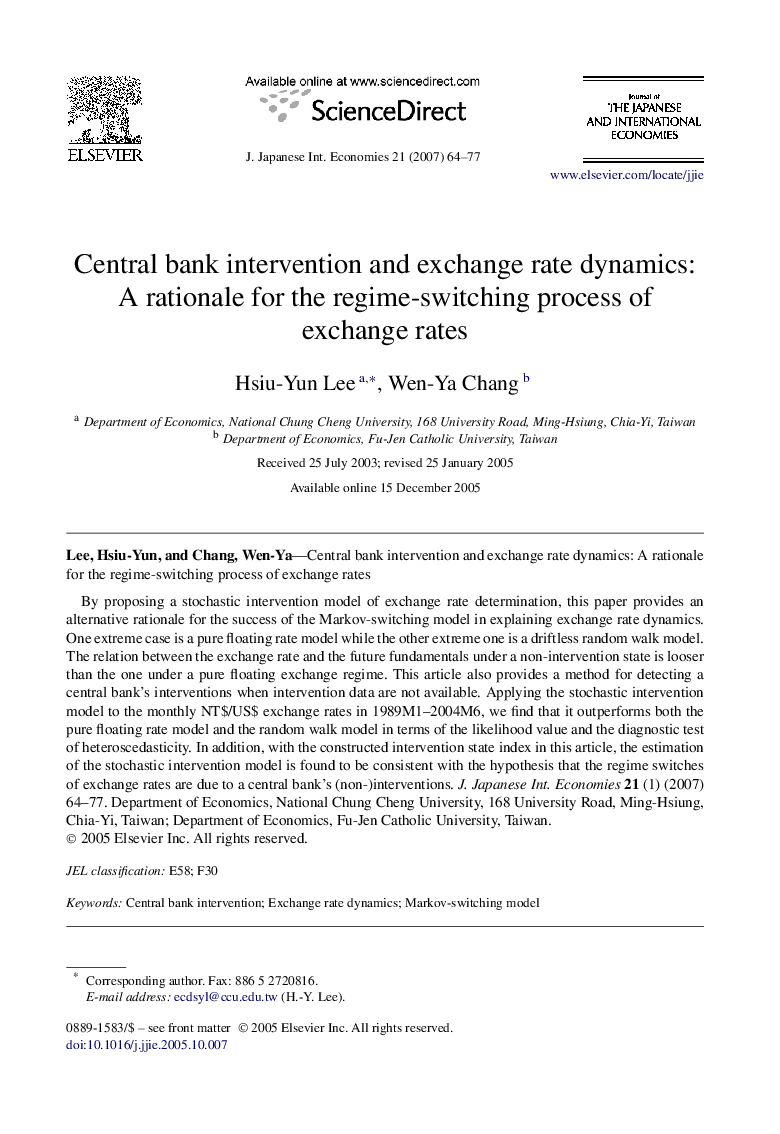| Article ID | Journal | Published Year | Pages | File Type |
|---|---|---|---|---|
| 965077 | Journal of the Japanese and International Economies | 2007 | 14 Pages |
Abstract
By proposing a stochastic intervention model of exchange rate determination, this paper provides an alternative rationale for the success of the Markov-switching model in explaining exchange rate dynamics. One extreme case is a pure floating rate model while the other extreme one is a driftless random walk model. The relation between the exchange rate and the future fundamentals under a non-intervention state is looser than the one under a pure floating exchange regime. This article also provides a method for detecting a central bank's interventions when intervention data are not available. Applying the stochastic intervention model to the monthly NT$/US$ exchange rates in 1989M1-2004M6, we find that it outperforms both the pure floating rate model and the random walk model in terms of the likelihood value and the diagnostic test of heteroscedasticity. In addition, with the constructed intervention state index in this article, the estimation of the stochastic intervention model is found to be consistent with the hypothesis that the regime switches of exchange rates are due to a central bank's (non-)interventions. J. Japanese Int. Economies 21 (1) (2007) 64-77.
Related Topics
Social Sciences and Humanities
Economics, Econometrics and Finance
Economics and Econometrics
Authors
Hsiu-Yun Lee, Wen-Ya Chang,
